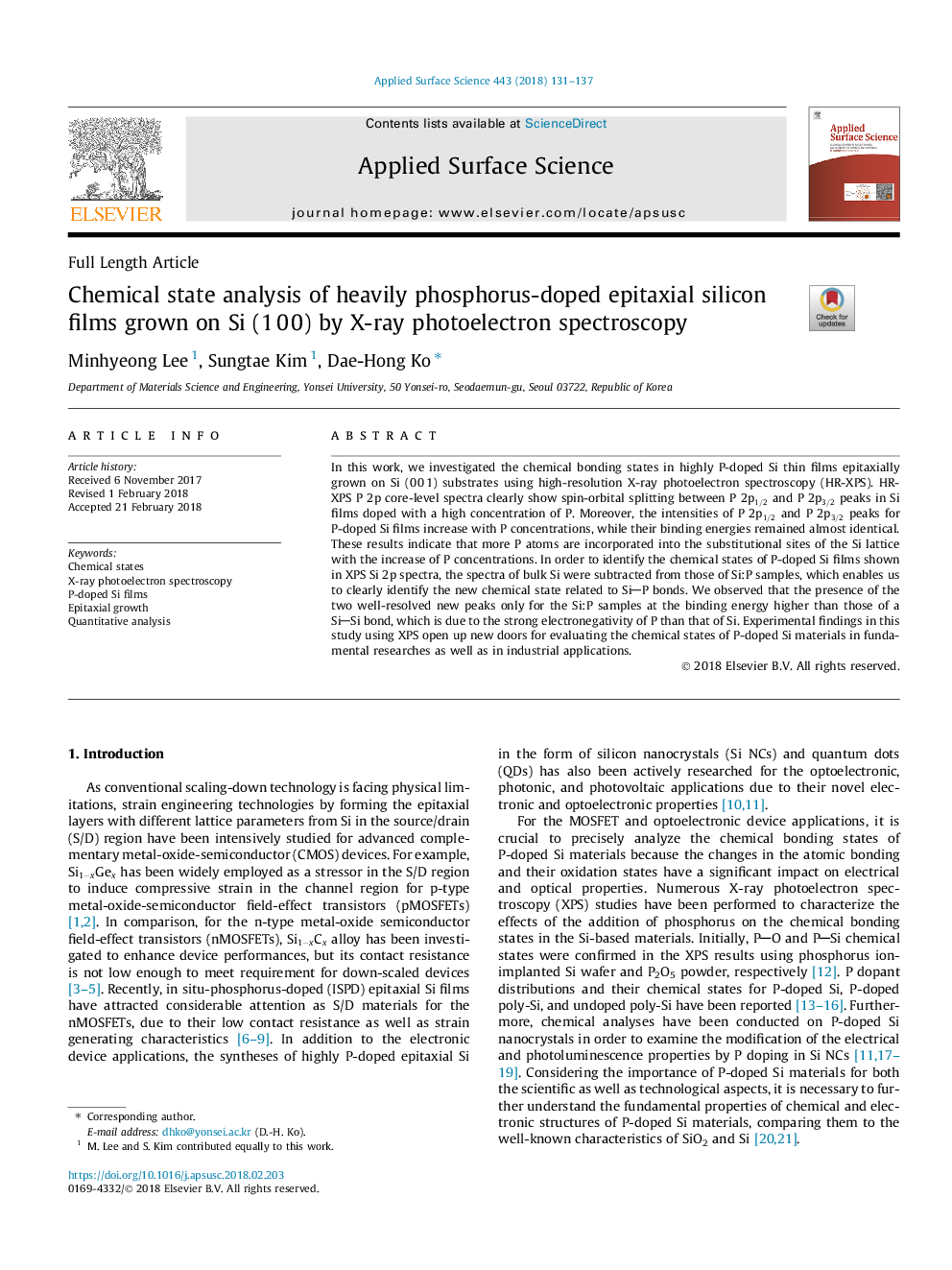| Article ID | Journal | Published Year | Pages | File Type |
|---|---|---|---|---|
| 7834482 | Applied Surface Science | 2018 | 7 Pages |
Abstract
In this work, we investigated the chemical bonding states in highly P-doped Si thin films epitaxially grown on Si (0Â 0Â 1) substrates using high-resolution X-ray photoelectron spectroscopy (HR-XPS). HR-XPS P 2p core-level spectra clearly show spin-orbital splitting between P 2p1/2 and P 2p3/2 peaks in Si films doped with a high concentration of P. Moreover, the intensities of P 2p1/2 and P 2p3/2 peaks for P-doped Si films increase with P concentrations, while their binding energies remained almost identical. These results indicate that more P atoms are incorporated into the substitutional sites of the Si lattice with the increase of P concentrations. In order to identify the chemical states of P-doped Si films shown in XPS Si 2p spectra, the spectra of bulk Si were subtracted from those of Si:P samples, which enables us to clearly identify the new chemical state related to SiP bonds. We observed that the presence of the two well-resolved new peaks only for the Si:P samples at the binding energy higher than those of a SiSi bond, which is due to the strong electronegativity of P than that of Si. Experimental findings in this study using XPS open up new doors for evaluating the chemical states of P-doped Si materials in fundamental researches as well as in industrial applications.
Related Topics
Physical Sciences and Engineering
Chemistry
Physical and Theoretical Chemistry
Authors
Minhyeong Lee, Sungtae Kim, Dae-Hong Ko,
